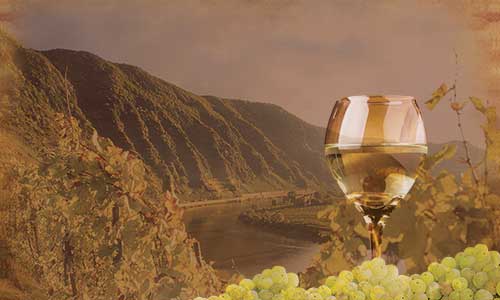On the steep slate and shale banks along the Mosel, the pristine, castle-crowned vineyards of the Rheingau or the rolling hills of Rheinhessen, Germany produces some of the world’s best, yet underrated wines.
Germany has a history of winemaking that dates back to 100 B.C. when ancient Romans, who conquered the region, began producing wines on local soil. It was the Romans, who already recognized the potential of sites like the Piesporter Goldtröpfchen (little droplets of gold) and who cultivated grapes there. Researchers found a wine press at the base of Piesport that dates back to 400 A.D., which is the largest Roman wine press ever found north of the Alps. During the Middle Ages, monks upheld the tradition of making wine and cultivated the vineyards that are famous to this day. Historical properties like the Cistercian Monastery Kloster Eberbach in the Rheingau have a viticultural history dating back to about 1200 AD.
In 1845, Queen Victoria of England visited the Rheingau, where she discovered her love for German Riesling and coined the term “Hock”, which is synonymous with German Riesling in Britain today. It originally referred to Riesling from the Rhine community of Hochheim.
Germany’s wine reputation lost its luster in the 1960s and 70s, when large quantities of sweet blended wines were created for export, among them the infamous Liebfraumilch and Blue Nun. While Germany continued to make and drink high quality wines (most Germans have never heard of either brand), sweet non-descript wines became synonymous with German wines internationally. Although still hard to find in your local wine shop, an increasing number of high quality German wines are now flowing across the Atlantic, recapturing the reputation they once possessed internationally.
Today, focus is on drier (or trocken) styles of wine, which make up nearly 70% of production. Germany also produces some extraordinary Sekt (sparkling wine). Correspondingly, Germans are the world’s largest consumers of sparkling wine per capita and it is customary to have a glass of bubbly any day of the week, no special occasion needed.
Most importantly, the Germans are in love with the great Pinot varietals of the world, Pinot Noir, Pinot Gris and Pinot Blanc. It is a little known fact, but Germany is the world’s 3rd largest producer of Pinot Noir and over the last 40 years has adapted the same high quality production methods that are also found in Burgundy, France. Today, Germany is being recognized as the new frontier for exceptional Pinot Noir. Many German Pinots can even rival Burgundy!
Text: Erin Brooks ± Photo: OWCIBES / weinhauss / WINEX / MONTROSE / TOASTER / WEBME

